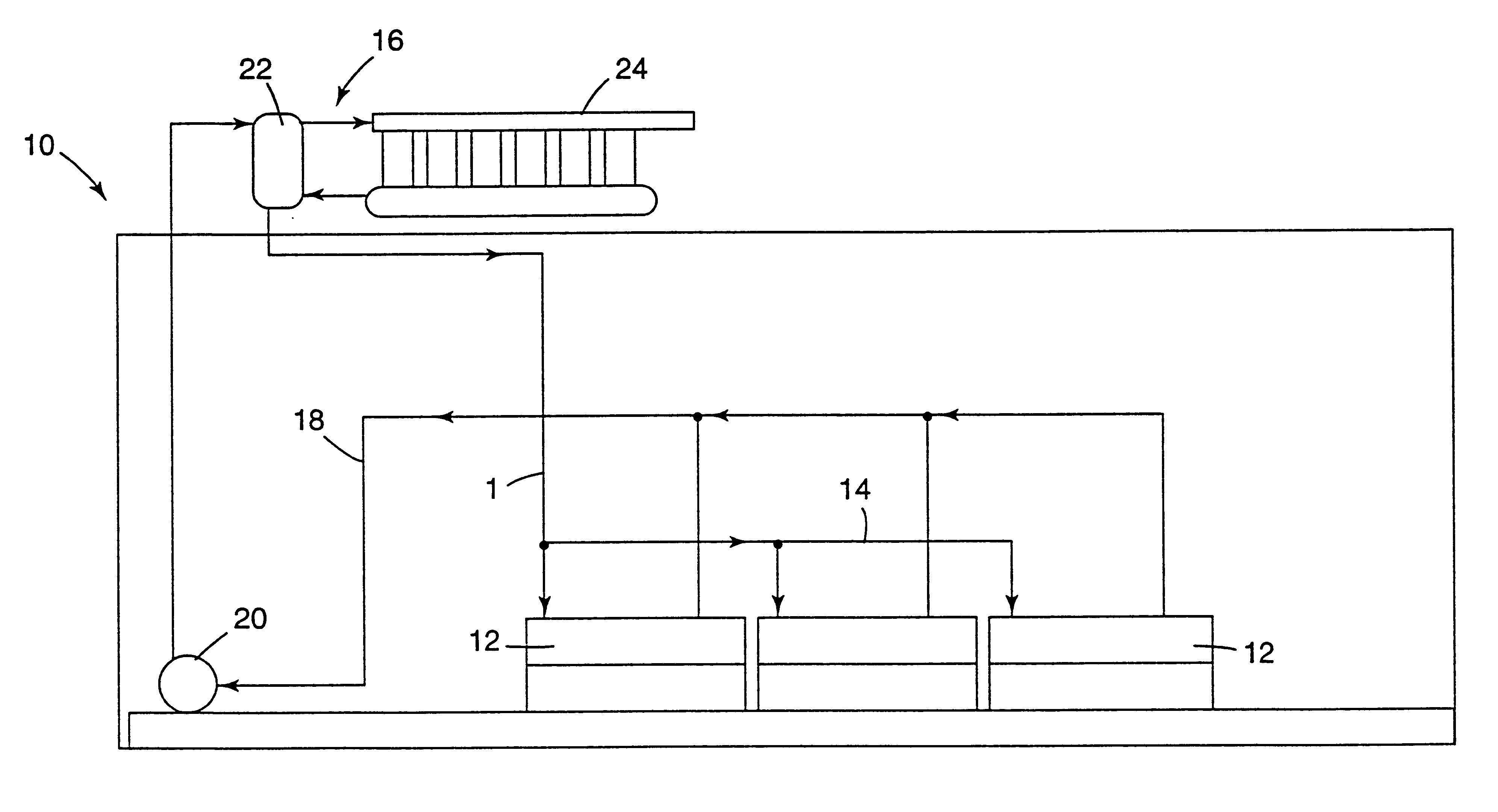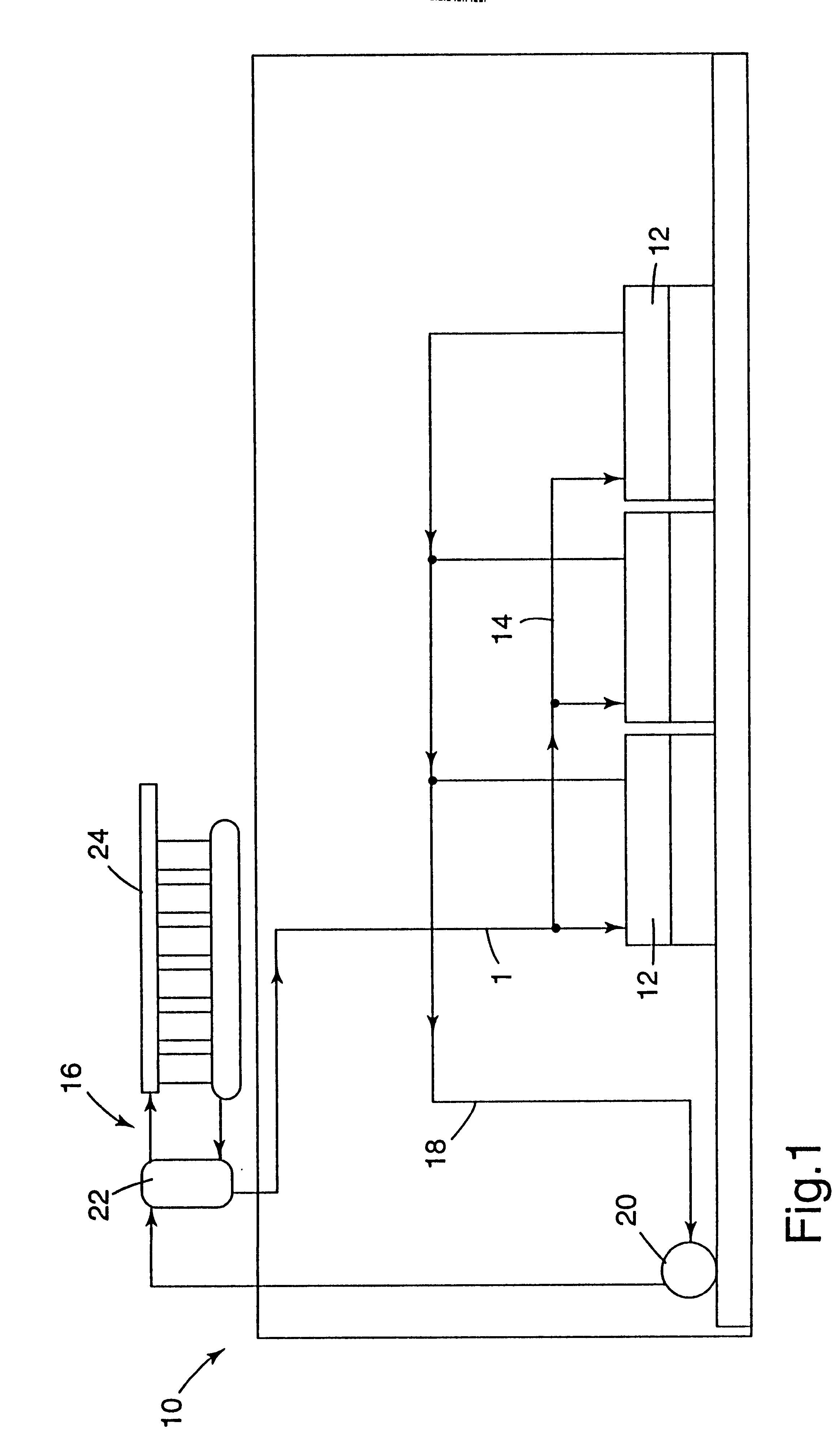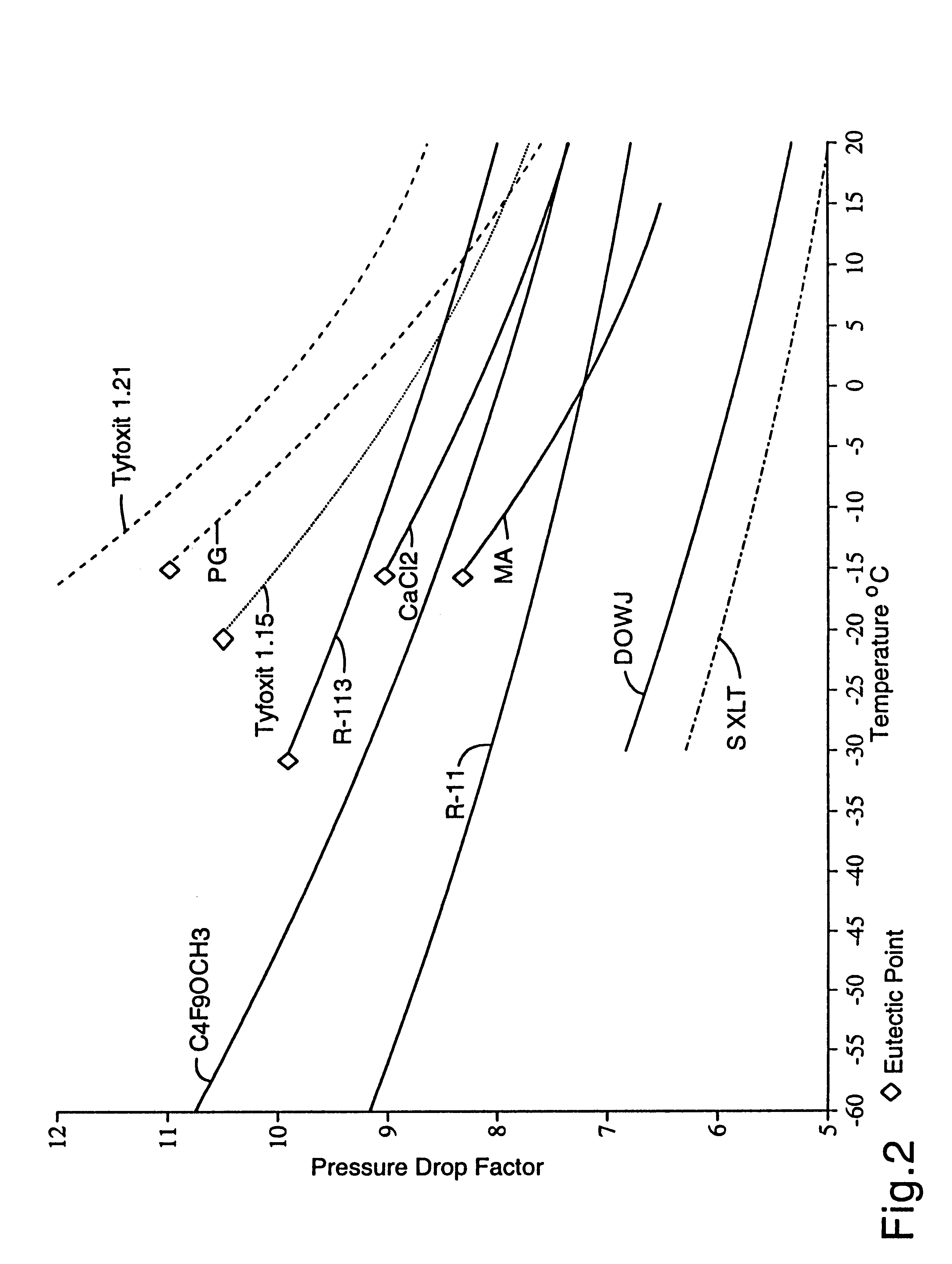Secondary loop refrigeration system
- Summary
- Abstract
- Description
- Claims
- Application Information
AI Technical Summary
Benefits of technology
Problems solved by technology
Method used
Image
Examples
examples 1-4
illustrate the improved performance characteristics of the heat transfer media of the present invention, compared to prior art heat transfer media.
example 1
The thermal conductivities of C.sub.4 F.sub.9 OC.sub.2 H.sub.5, C.sub.4 F.sub.9 OCH.sub.3, C.sub.3 F.sub.7 OCH.sub.3, and C.sub.6 F.sub.14 were determined using a transient, hot-wire thermal conductivity cell over the temperature range of -50.degree. C. to +50.degree. C., according to ASTM D 2717-86. A platinum wire was used in the measurements. The wire was 20 cm in length, 0.17 mm in diameter, and had a resistance of 120.OMEGA. at 20.degree. C. The thermal conductivities are set forth in Tables 1-4.
example 2
The densities of the fluids of Example 1 were determined from 0.degree. C. to +50.degree. C. using a using a Mettler-Parr Model DMA45 densitometer. For temperatures below 0.degree. C., densities were determined by extrapolation of the measured densities with a linear curve fit. The densities are set forth in Tables 1-4.
PUM
 Login to View More
Login to View More Abstract
Description
Claims
Application Information
 Login to View More
Login to View More - R&D
- Intellectual Property
- Life Sciences
- Materials
- Tech Scout
- Unparalleled Data Quality
- Higher Quality Content
- 60% Fewer Hallucinations
Browse by: Latest US Patents, China's latest patents, Technical Efficacy Thesaurus, Application Domain, Technology Topic, Popular Technical Reports.
© 2025 PatSnap. All rights reserved.Legal|Privacy policy|Modern Slavery Act Transparency Statement|Sitemap|About US| Contact US: help@patsnap.com



